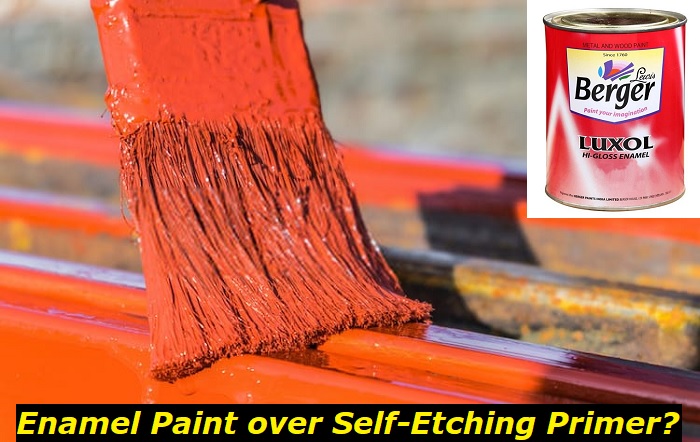You probably know it’s a bad idea to use self-etching primer on an already-painted surface. These primers contain sulfuric acid that can corrode an existing surface or ruin your paint job entirely. The result of this is extra work for you and wasted primer since you will have to prime again.
Even professionals who understand why self-etching primers should go on clean surfaces sometimes worry about other factors involved in the process. Questions about painting over primed surfaces and how long to leave the primer are common queries in the mind of both DIY and expert painters.

While the product information should tell you what to expect with the primer, some manufacturers do not include this and customers can only experiment.
Can You Use Enamel Paint Over Self-Etching Primer?
Indeed, you can paint over self-etching primer. Before applying the paint, check that the surface is dry enough else you risk ruining the existing coating. In some cases, applying the paint over the primer is necessary to give the surface a perfect finish and preserve it.
The primer should match the kind of enamel paint you use so you end up with a perfect finish. If the paint is a good fit for the primer, it will adhere well to it even if you paint over on the same day.
How Long Should You Wait Before Painting Over?
The best practice is to wait at least a day before painting but of course, you can apply the enamel paint after a few hours. With metals, you can begin by sanding to clean the surface.
How long you wait might also depend on the number of coatings you applied. A single coat should be ready in 2 minutes so 30 minutes should be enough total drying time. Consider waiting a few hours to sand the primed surface for a smoother result.
You may have to wait longer before painting if the temperature in the area is below 70° F as the temperature might not be enough to thicken the primer. An average humidity level is sufficient to dry the primed surface.
The advantage of waiting for a longer period before painting is that the finished work will end up smooth and bubble-free. Paint works with streaks are often a result of painting over too soon which causes the top coating to peel off within a short period.
The Takeaway
Self-etching primers always need an extra coat for proper sealing but using the primer with the wrong coat can ruin your paint job. Here are some tips to remember when before painting over a primed surface:
- Stripping the old paint from the metal is a vital part of the process you shouldn’t ignore. Remove the existing paint or dirt to make the primer and new coat adhere better.
- Applying Epoxy primer before self-etching primers make etching difficult since both fillers are heavy.
- Stick to the manufacturer’s instructions about the ideal duration between the self-etching primer and paint.
- Can You Unmix Paint: Techniques, Consequences, Alternatives - February 23, 2024
- Does Primer Need to be Mixed? Effective Primer Application - February 22, 2024
- How to Make Old Paint Usable Again: Retrieving and Preserving Paint - February 21, 2024



